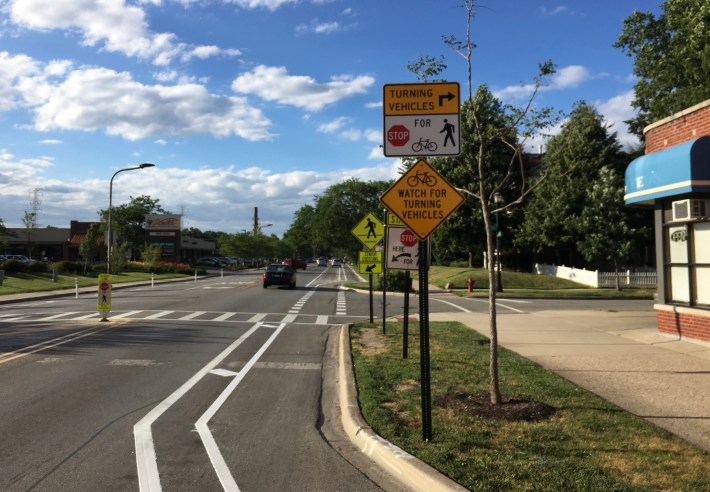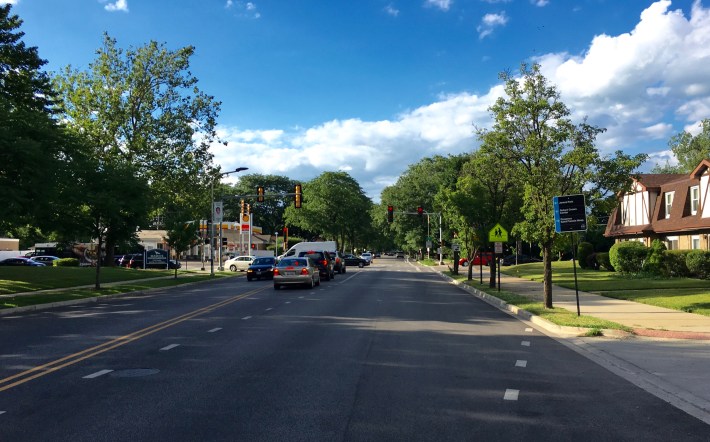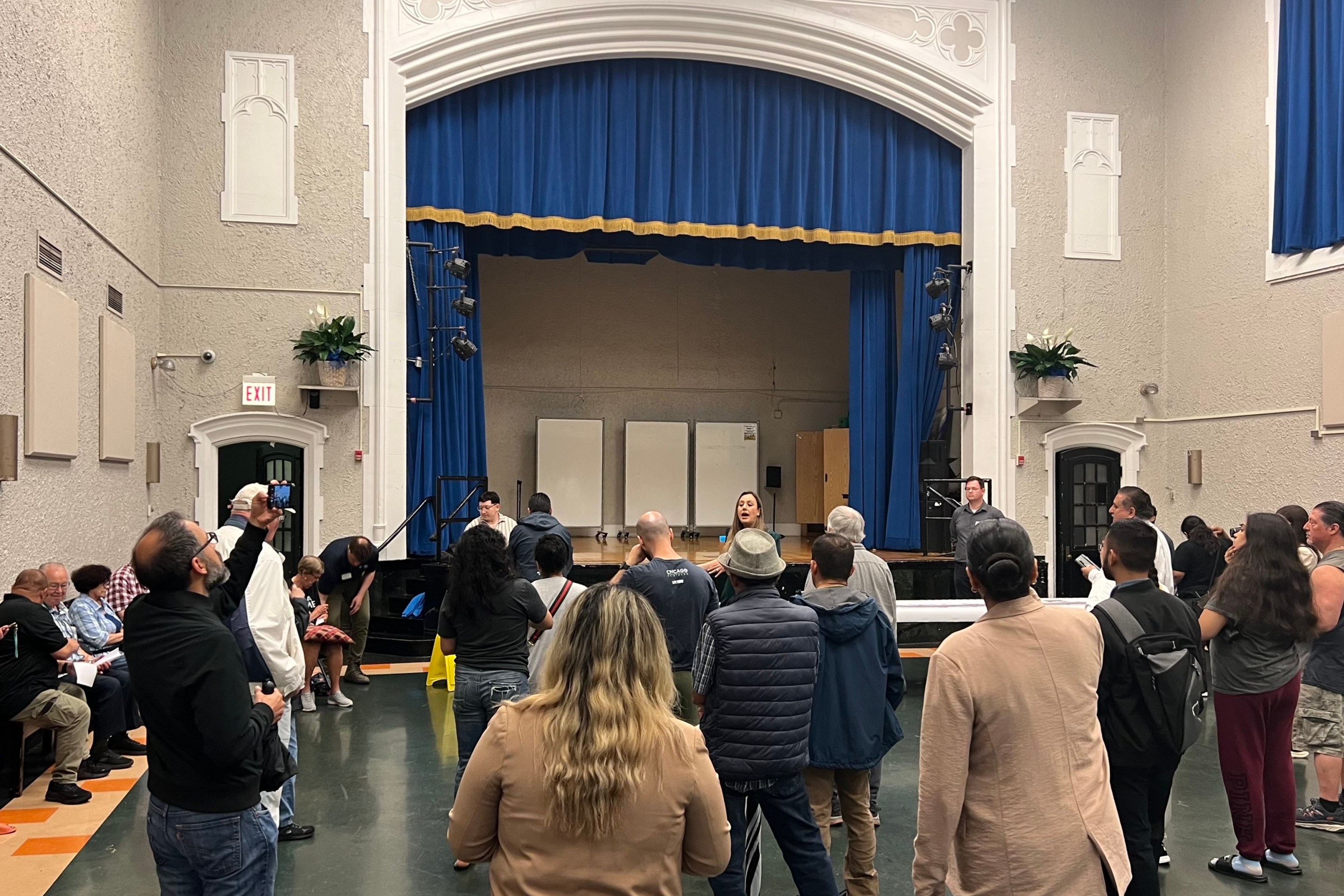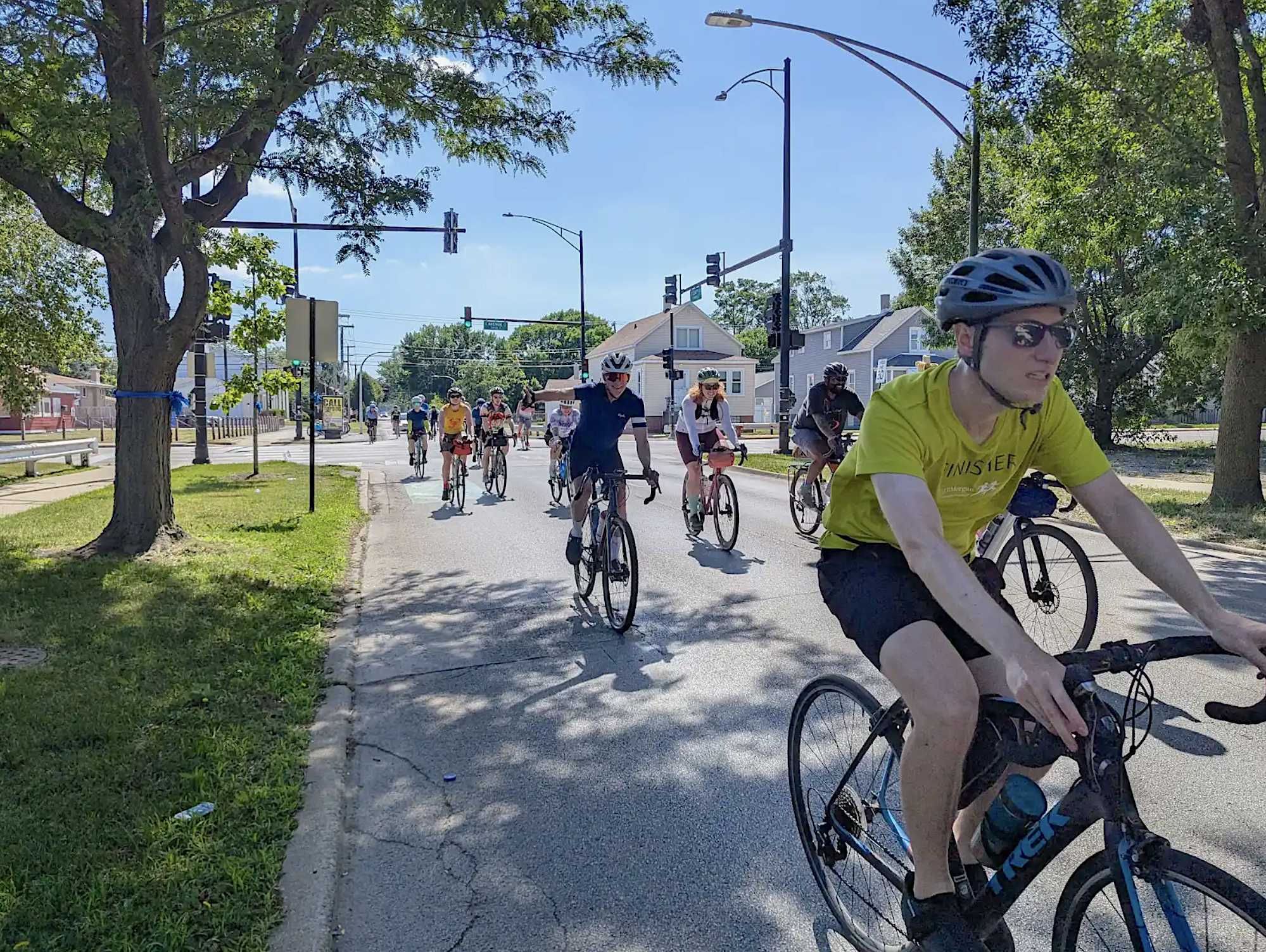
Evanston installed new protected bike lanes on Dodge Avenue from Howard Street to Lake Street last month, and already some residents are complaining that the lanes have made it unsafe to park their cars. But these fears are unfounded because Chicago has had protected lanes with a nearly identical design for five years.
The new Dodge protected bike lanes replace conventional bike lanes that were located on the left side of the parking lanes, in the door zone. The new bike lanes are curbside with the parking to the left, separated from bike traffic by a striped buffer and flexible posts. It's the same strategy that was used on Kinzie Avenue, Chicago's first protected bike lane street, in 2011 and has been employed successfully on many more Chicago roadways since then.
I recently rode the Dodge Avenue PBLs and found them to be just as good as any that the Chicago Department of Transportation has installed. They're also a little better than the first PBLs Evanston installed downtown on Church Street because the Dodge bike lanes are somewhat wider.
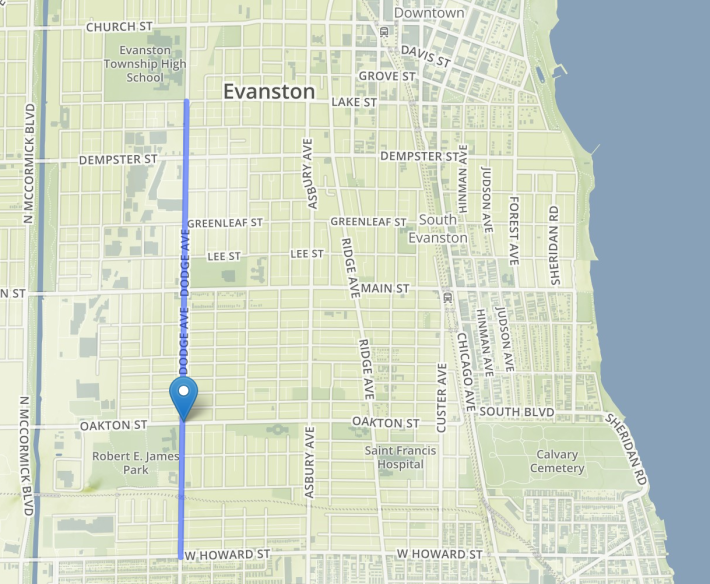
But some Evanston residents are up in arms about the new street configuration. "The new design makes it more hazardous for people boarding buses or getting into cars, because driver-side doors now open into very heavy, fast moving traffic," a resident complained at a City Council meeting on Monday night, according to a report in Evanston Now. Actually, bus passengers aren't affected by the protected lanes at all because the design still allows buses to pull up to the curb to pick up and drop off customers.
When I rode the Dodge bike lanes during the evening rush, motorized traffic was light, and vehicles were traveling at moderate speeds. That was probably partly because the street reconfiguration involved narrowing the existing travel lanes to make room for the PBLs, a type of "road diet," which discourages speeding. While the new layout may put parked cars a bit closer to moving traffic, the traffic is likely going somewhat slower than before. Another benefit is that the bike lanes shorten crossing distances for pedestrians.
Some meeting attendees also argued that the new bike lanes make it challenging for emergency vehicles to travel on Dodge Avenue, according to Evanston Now. However, reporter Bill Smith added that he observed a fire department ambulance making its way down Dodge from Church Street to a nursing home near Howard at the end of Tuesday's a.m. rush, and the ambulance seemed to have no trouble navigating the street.
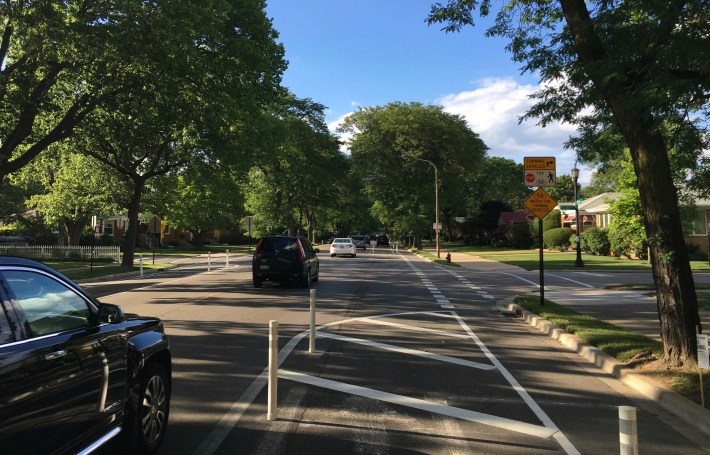
That isn't to say that the design of the Dodge lanes is perfect. One issue is that drivers turning right across the protected lanes are given wide turning radii at some of the intersections, and there's only paint at the far end of the bike lane buffer zones, rather than a physical barrier. That makes it easy for drivers to make fast turns across the bike lane, which could result in "right hook crashes."
The city of Evanston has attempted to mitigate this issue by posting lots and lots of warning signs. One sign tells bicyclists to watch for turning vehicles and the other tells turning motorists to stop for bicyclists and pedestrians.
Another problem is that there's a gap in the protected bike lanes on the block of Dodge south of Oakton Street, by Dawes Elementary School. Interestingly, 8th ward alderman Ann Rainey, who originally opposed the protected lanes, called that unprotected section "unfortunate" and "terrifying" at Monday's meeting, according to Evanston Now. Mayor Elizabeth Tisdahl responded that the city would take another look at that section and try to improve safety there before the school starts up again.
Normally, when CDOT designs bike lanes so that they drop out at an intersection – which is unfortunately very common – they at least install bike-and-chevron "shared-lane markings" to indicate where cyclists should ride and remind motorists to watch out for bikes. There are so such markings on Dodge, and bike riders must share one extremely wide lane with motor vehicles.
One more issue is that since the northern terminus of the Dodge protected lanes is Lake Street, by Evanston Township High School, they don't link up with the PBLs on Church Street, two blocks north. That's a missed opportunity.
These criticisms aside, it's great that Evanston is starting to build a protected bike lane network. Hopefully the city will hold its ground in the face of calls to remove the Dodge lanes. While protected bike lanes were once controversial in Chicago as well, they're now fairly ubiquitous and well accepted, and it's likely we'll see the same learning curve in Evanston.
